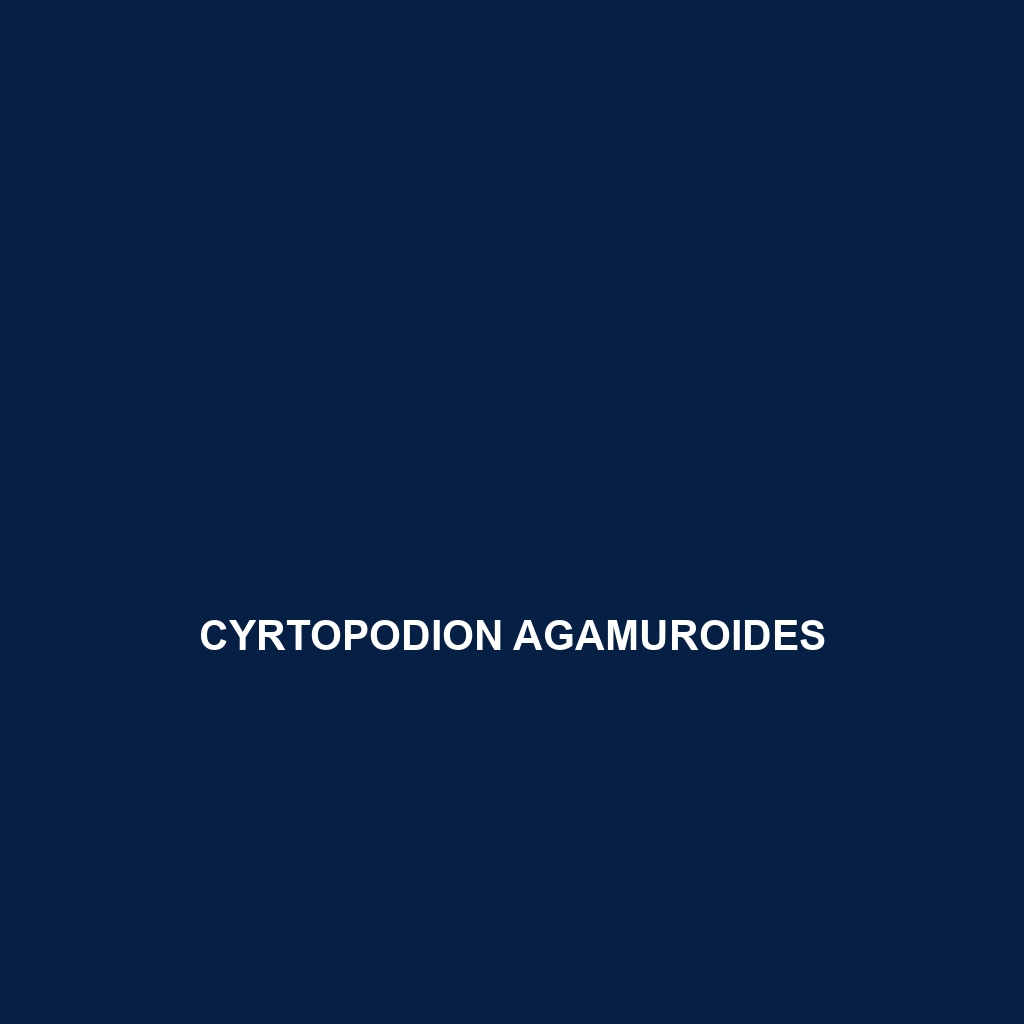Common Name: Cyrtopodion agamuroides
Scientific Name: Cyrtopodion agamuroides
Habitat:
Cyrtopodion agamuroides, commonly known as the Agamurid gecko, is primarily found in the arid and semi-arid regions of Central Asia, notably in countries such as Uzbekistan, Kazakhstan, and parts of Turkmenistan. These geckos inhabit rocky outcrops, sandy deserts, and areas with sparse vegetation, where they thrive in warm environments that provide ample cover and hunting grounds.
Physical Characteristics:
The Agamurid gecko is a small to medium-sized lizard, typically measuring between 8 to 12 cm in length. They exhibit a unique coloration that ranges from sandy beige to light brown, which serves as excellent camouflage against their desert surroundings. Their bodies are slender with a distinctive flattened head and large, bulging eyes that enhance their vision in low-light conditions. The skin texture is rough, adorned with tiny scales, and they have distinct patterns that may vary among individuals, providing further interest for herpetology enthusiasts.
Behavior:
Cyrtopodion agamuroides is primarily nocturnal, displaying a range of interesting behaviors during the night. They are adept climbers, often seen scaling rocky surfaces in search of insects. These geckos are known for their ability to remain motionless for long periods, allowing them to blend into their environment and avoid predators. When threatened, they exhibit rapid darting movements to escape, showcasing both agility and speed.
Diet:
The diet of Cyrtopodion agamuroides consists mainly of small insects and arthropods, including crickets, beetles, and moths. Their feeding habits show a preference for nocturnal prey, which aligns with their active nighttime behavior. These geckos employ a sit-and-wait strategy, using their keen eyesight to hunt effectively in the dark while minimizing energy expenditure.
Reproduction:
Reproduction in Cyrtopodion agamuroides typically occurs during the warmer months, with breeding seasons peaking in late spring to early summer. Females lay clutches of 1 to 2 eggs, which are usually deposited in sandy or rocky crevices for protection. The eggs incubate for approximately 30 to 45 days before hatching, resulting in tiny hatchlings that are independent from the moment of birth.
Conservation Status:
As of now, Cyrtopodion agamuroides is classified as vulnerable due to habitat loss resulting from human activities and climate change. Conservation efforts are important to ensure the survival of this unique species, whose populations are increasingly threatened by urbanization and environmental degradation.
Interesting Facts:
Cyrtopodion agamuroides is known for its exceptional ability to regenerate its tail, a defensive mechanism against predators. The ability to blend seamlessly with its environment not only provides camouflage but also has made this gecko an interesting subject of study for researchers focusing on adaptive behaviors in reptiles.
Role in Ecosystem:
The Agamurid gecko plays a vital role in its ecosystem as both a predator and prey. By consuming a variety of insects, it helps control pest populations, contributing to the ecological balance within its habitat. Furthermore, as a prey species for birds and mammals, Cyrtopodion agamuroides is an integral part of the food web, illustrating the interconnectedness of desert ecosystems.
